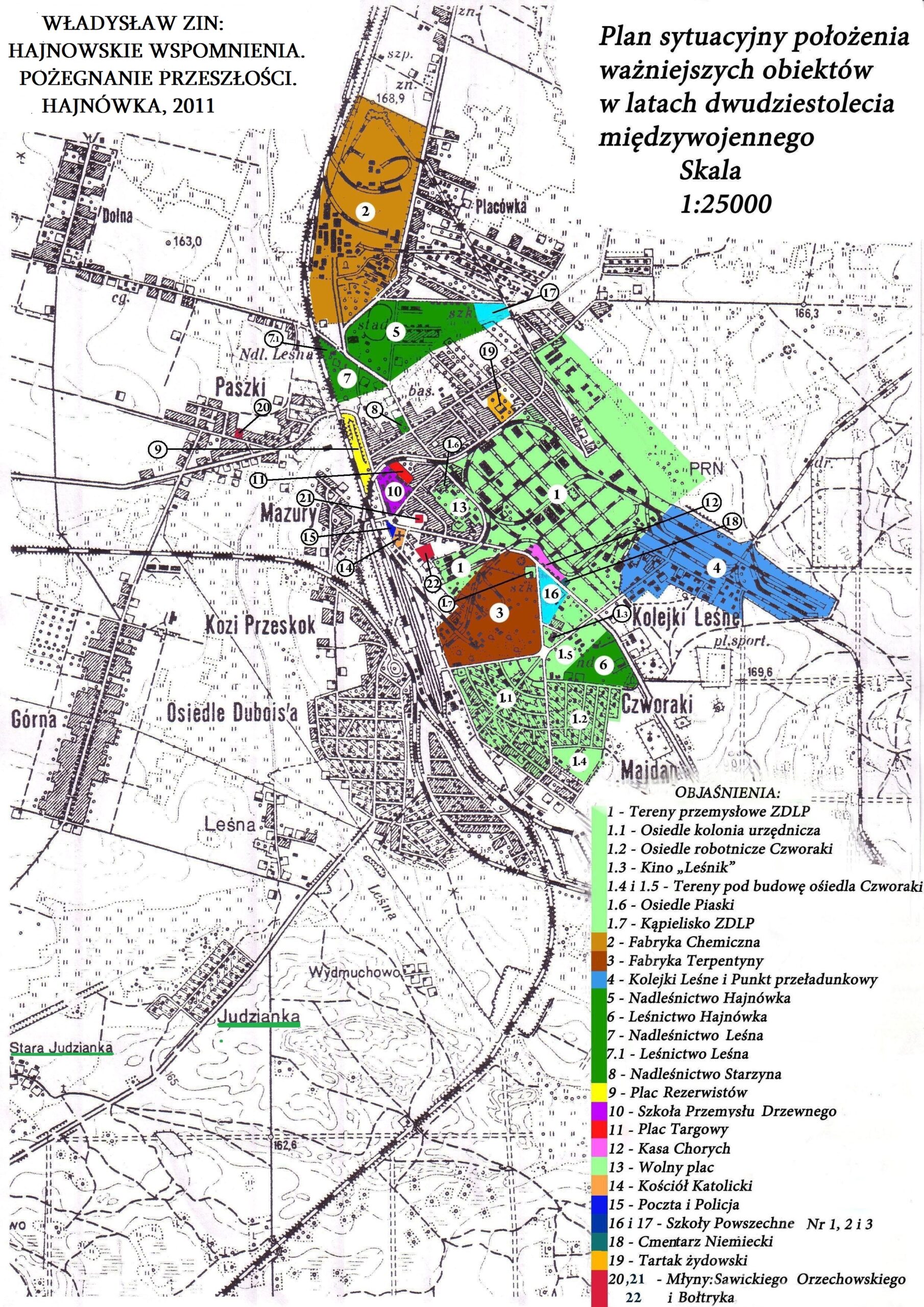NEW JUDZIANKA – LIFE ON THE EDGE OF THE FOREST
When Poland regained its independence in 1918, Hajnówka, located on the eastern outskirts of the country, had all the industrial equipment left behind by the evacuating Germans – sawmills and logging and woodworking equipment.
The Germans left the Białowieża Forest only in February 1919
In 1928, the town already had a population of 748 people, and in 1938, about 17,000. In 1946, after the Second World War, the settlement was inhabited by 9212 Hajnówka residents.
Industrial plants were owned by the state and could be leased to private companies. The sawmills and forest railways were leased to the English company The Century European Timber Corporation, commonly known as Centura, which planned to export the maximum amount of timber from the forests. For this, of course, workers were needed, which the company sourced almost from all over Poland, tempting them with good salaries. Centura was given a ten-year licence to operate.
After five years, the contracts with Centura were terminated
The company was paid high compensation in English pounds. The company intensively cut down the best trees, focused on maximum profit and removal of wood from the forest.
The first arrivals
Zakłady przemysłowe były własnością państwa i mogły być wydzierżawiane spółkom prywatnym. Tartaki i kolejki leśne wynajęła angielska firma The Century European Timber Corporation, potocznie nazywana Centurą, która planowała wywóz maksymalnej ilości drewna z lasów. Do tego potrzebni byli oczywiście pracownicy, których firma pozyskiwała niemal z całej Polski, kusząc ich dobrymi zarobkami. Centura dostała dziesięcioletnie pozwolenie na działalność.
The chimney is the heart of the house
According to the law at that time, did a chimney on the roof of a house constitute the right to live in? Therefore, dugouts and sawdust houses were built in great haste in order to put on a roof and build a chimney as quickly as possible.
Development of Hajnówka
In the early 1920s, Hajnówka was a small settlement with a post office, a police station and a few shops. A church was established in the building of the former German cinema, a synagogue was also built in the town, and an Orthodox chapel was also organized. Several shops, craft and service establishments, and three primary schools also appeared. In 1922, the State School of Wood Industry was established in Białowieża, which was moved to Hajnówka after two years of operation.
The previously small town of Hajnówka, according to government plans, was to become a powerhouse of the timber industry. The construction of a new sawmill was started and industrial plants were consistently modernised. A health insurance fund was built. The new J. Piłsudski House for Foresters was vibrant with cultural and social life. There was a general university, a public library, a cinema and an amateur theatre.
The roadside tavern was replaced by restaurants, beer bars, a pastry shop and a clerical casino. In an effort to improve the living conditions of the workers, the industrial plants began to build housing estates. Housing estates for their workers were built by: State Forest Wood Works, Chemical Factory, Forest Railway Works and Society of Friends of Hajnówka.
Building Cooperative of State Forestry Administration Employees
In 1936, the Building Cooperative of State Forestry Administration Employees was established with 60 members. Due to the huge demand for housing, the board of the cooperative (A. Gawędzki, J. Malinowski, J. Michalak, St. Kęska), together with its president Stanisław Jeszke, decided to build a housing estate. However, there was a problem with the location, as there was no adequately large site in Hajnówka at the time. In addition, the town was bordered by a primeval forest.
So the cooperative turned for help to Bielsk Podlaski district office, which allocated forest land on the right side of the road to Kleszczel, 3 km from the town centre, in close proximity to the village of Judzianka, for this purpose. It was decided to clear the forest and expand Hajnówka.
Hajnówka under construction
Construction of the housing estate began in 1936 and was completed the following year. The forest was cleared, streets and building plots were marked out (8 houses were placed on 16 plots on the right side of today’s Warszawska Street; another 8 on both sides of Gajowa Street; 3 houses on 6 plots were placed on Myśliwska Street and 3 on today’s Zwierzyniecka Street). Within a year, 30 semi-detached two-family houses were built to accommodate 60 families. However, the desired flat and garden house could only be acquired by those who decided to take on the obligation to pay the instalments of the long-term loan.

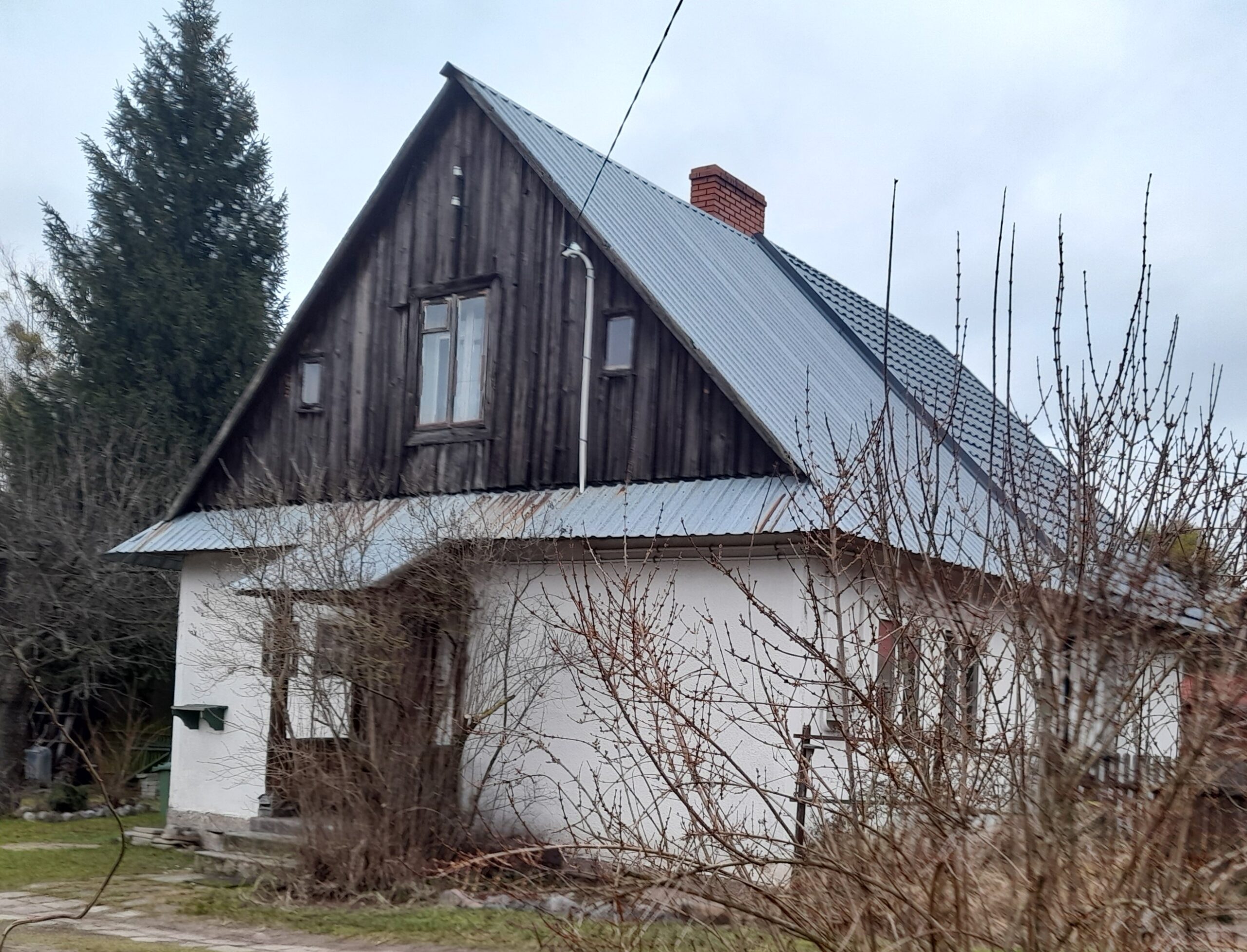
New residents of the estate received apartments as a result of drawing lots
Two members of the cooperative drew a lot with a number. The number extracted corresponded to the house number in the estate. The side of the apartment (east or west) was agreed between the tenants.
What did the new estate look like?
The houses were built of high quality forest wood. The roofs were covered with grey tiles and the facades were decorated with white plaster, which at the time was associated with high standards, elegance and was also thermal protection. All properties were fenced off with even rows of wooden fences, wells were dug and utility rooms were built.
The standard of the flats was high. Although all the houses were the same, the tenants furnished the flats according to their own abilities, tastes and needs. In front of the entrance door to each house was a porch with a gabled roof fixed on wooden pillars. From the porch, through a small vestibule, one entered a corridor from which entrances led to the kitchen, two separate rooms, a cellar and a bathroom. The houses were heated by tiled cookers.
Wells were placed on the boundary of two neighbouring plots.One well could be used by two families. There were a total of 4 wells located on the border of four properties.
Plots of land of 0.25 ha were assigned to each house. The yard had to be landscaped, dozens of larger and smaller tree trunks had to be cleared, the land had to be levelled and many other tidying up jobs had to be done. Gardens were established, planting perennials, sowing ornamental flowers and growing vegetables. Chickens, geese and ducks were raised. Some had piglets and even cows. Farm work was carried out in their spare time. Residents of Judzianka were employed in Hajnówka workplaces. Representatives of various professions lived here: administration, education, health service, forestry, trade, industry and services. In 1939 the following lived in Judzianka with their families: Arkuszewski Jan, Badowski Aleksander, Balcerek Józef, Barbachowski Aleksander, Bartel Piotr, Bednarczyk Kazimierz, Bernaziuk Bronisław, Białobrzeski Jan, Czarkowski Ksawery, Dąbek Władysław, Dąbrowski Kajetan, Dębski Leon Dębski, Doroszkiewicz Daniel, Dudko Wincenty, Duniec Konstanty, Głownia Franciszek, Gryko Konstanty, Iwas Karol, Jabłoński Jan, Jarząbek Feliks, Jarząbek Józef, Jarząbek Telesfor, Jesionek Władysław, Kałużny Aleksander, Kasiułajtis Jerzy, Klimek Antoni, Kołpa Józef, Konefał Karol, Konopiński Stefan, Kopciewicz Zygmunt, Kubacki Piotr, Kurowski Leopold, Lewicki Jan, Lipczyński Piotr, Lorentz Edward, Łajewski Tomasz, Mazalski Michał, Mielnik Dominik, Moszczyński Jan, Otechel Michał, Pacocha Jan, Pazio Mikołaj, Pec Władysław, Penko Czesław, Pietraszko Eustachiusz, Pietrzyk Stefan, Rauchut Emil, Ruta Józef, Sac Kalenik, Sadowski Aleksander, Sawka Jakub, Szubert Władysław, Tkaczyk Władysław, Więckowski Józef, Wioliński Władysław, Wojszel Michał, Worotnikow Mikołaj, Woś Stanisław, Wyszyński Bolesław and Zakroczymski Józef.
During the Soviet occupation, three deportations of the Hajnówka population to Siberia took place
The first took place on the night of 10 February 1940, and involved Polish military settlers and employees of the state forestry administration with their families, lower state and local government officials. The second – on 13 April – mainly affected the families of those arrested a few months earlier, as well as prisoners of war, people of culture and science. The third – from June 1940 – involved refugees from central and western Poland who had found themselves in the Borderlands in September 1939. The fourth was conducted from 13 to 22 June 1941. At that time, the rest of the refugees from the West, professional intellectuals, skilled workers, railwaymen and wealthier farmers were deported.
During the German occupation, mass executions took place on 12 May 1942 and 17 September 1943.
A total of 143 Hajnówka residents were shot for collaborating with the partisans. Some still alive were thrown into a mass grave in the gravel pit. Dr Kazimierz Ptaszyński was then killed. He was shot together with his pregnant wife and five-year-old daughter Alinka. In 1943, around 800 Jews were taken to Treblinka concentration camp. In 1944, in turn, teachers were deported to Ravensbruck concentration camp for organising clandestine teaching and many others, including government employees.
Soldiers of the 30th Polesie Infantry Division of the AK were sneaking around the Bialowieza Forest. Near the Pushcha settlement of Topiło, 15 km from Judzianka, a base was established for the grouping of troops. Judzianka was a place of meetings and activities of an underground youth group. A group of boys aged 17-22 – inhabitants of the neighbouring districts of Nowe Parcele (Warszawska), Leśna and Judzianka – set out from Judzianka to help the fighting Warsaw. They planned to reach the Warsaw area and join a partisan grouping of the 30th Polesie Infantry Division of the Home Army.
The boys’ conspiracy meetings were held in a grove, the place where today Primary School No. 3 is located
When they joined the division and waited to cross the Vistula, the grouping was disarmed. The boys found shelter in Celestynów. Most of them were arrested in the autumn; some were sent to Majdanek and some went to the front and participated in the capture of Berlin. The war episode involved: Czesław Bański, Zdzisław Bański, Stanisław Barbachowski, Buczek, Demski, Ludwik Doroszkiewicz, Zdzisław Gugań, Wacław Kramierski, Zdzisław Obuchowicz, Józef Pazio, Henryk Pietraszko, Bazyli Radzymin, Wacław Szypulski, Marian Zalewski. Demski and Ludwik Doroszkiewicz were killed. Henryk Pietraszko finished the war with the rank of second lieutenant and served in the Navy after the war.
The Soviet terror at Judzianka is commemorated by a monument standing by the road leading to Kleszczel
It is a tall cross made of railway rails, two huge boulders and a plaque with the names of the people killed and a dedication: To the memory of the victims of the crime committed here by the NKVD on 25.06.1941 on 16 inhabitants of Siemiatycze and the surrounding area – Families and society of Hajnówka.
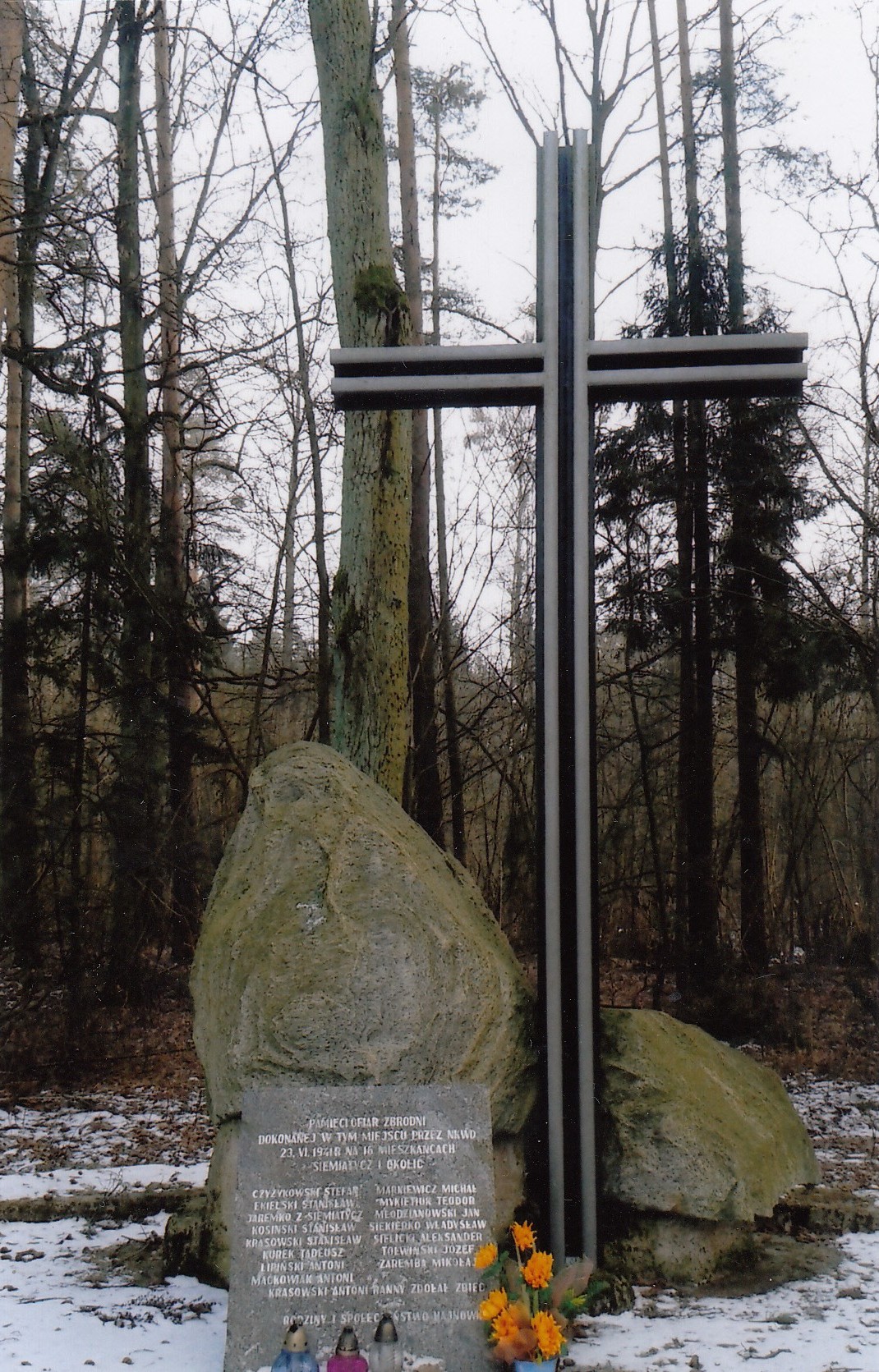
Towards the future
In 1949, a four-class primary school was opened in the Olszewski house, which functioned for 14 years. The head of the school in 1950-1954 was Mieczysław Gryncewicz, then Malinowski, and later Kopczuk. Teaching classes were conducted by school managers and teachers: Safranienko and Zieńczyk. The new one-storey building of Primary School No. 3 was constructed in 1963 on Działowa Street. Initially, the school was a branch of Primary School No. 1. The first head of the school as an independent unit was Zenaida (Sajewicz) Filinowicz. From 1991 to 2020, Halina Pustelnik was the headmaster. Later Karolina Warchoł-Worończuk took over as headmaster.
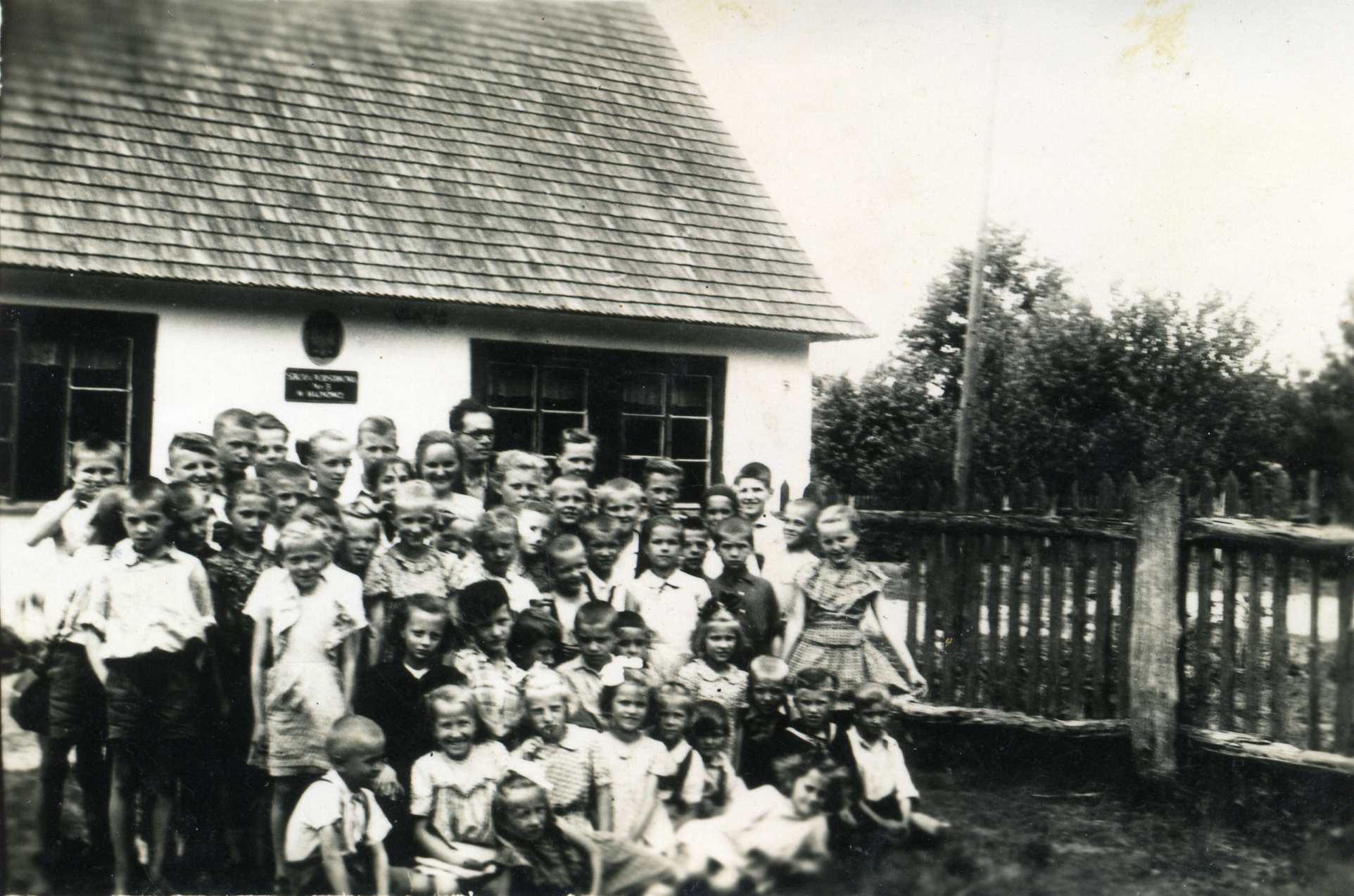
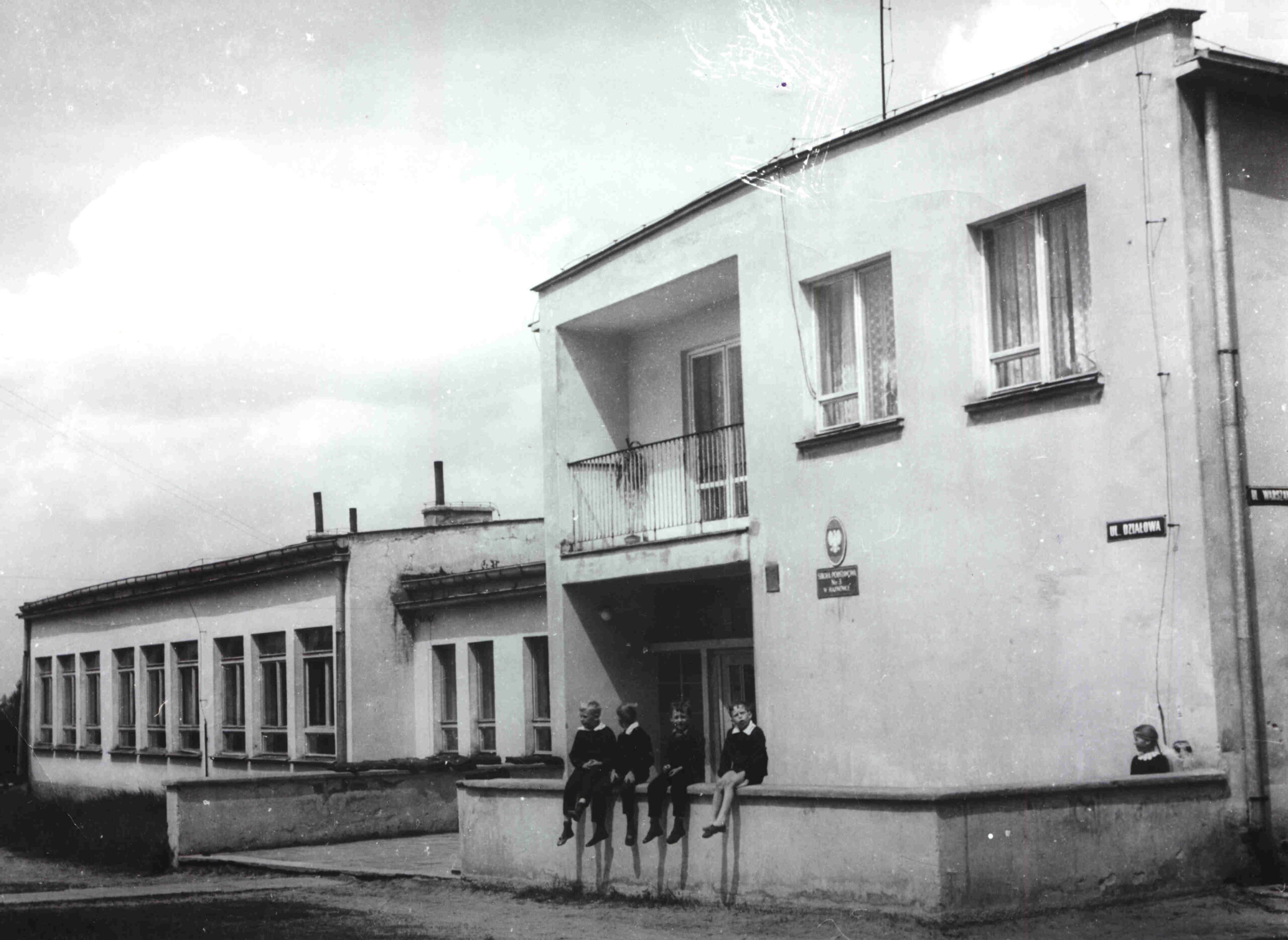
On 4 September 2020, the school was named after Dr Kazimierz Ptaszyński
Dr Ptaszyński specialised in paediatrics. During the war, however, he took care of all the sick. He collaborated with the resistance movement and operated on the wounded in the forest. He gave the partisans medicines and dressing materials. He gave his life and the lives of those closest to him for this help.
When the housing estate was completed in 1937, it was given the official name ‘Kolonia Leśna’. Just behind the housing estate, a kilometre away, is the tiny Old Judzianka. The name Judzianka stuck to the housing estate and remained so despite the fact that it was later given different names by successive authorities. Today, the names Nowa Judzianka and Stara Judzianka perfectly describe both settlements.
CALENDARIUM
- 1916 – Escherichwerk in Gaynowka, a sawmill with 10 sawmills, 2 circular saws and 4 cutting machines, is founded in Hajnówka
- 1918 – Poland regains its independence; the population of Hajnówka is then 118
- 1924 – State School of Wood Industry is established in Hajnówka
- 1924–1929 – sawmills and forestry railways are leased by the English company The Century European Timber Corporation (known as Centura)
- 1928 – Hajnówka has a population of 748 inhabitants
- 1934 – Hajnówka becomes a municipality
- 1936 – Construction of the State Forestry Administration Workers’ Housing Cooperative is established; construction of a housing estate in Judzianka begins
- 1937 – construction of the “Kolonia Leśna” housing estate on Judzianka is completed
- 1.09.1939 – outbreak of World War II
- 10.02.1940 – deportation of Hajnówka inhabitants to Siberia and Kazakhstan
- 25.06.1941 – murder of the inhabitants of Siemiatycze
- 12.05.1942 – murder of the inhabitants of Hajnówka
- 17.09.1943– murder of the inhabitants of Hajnówka
- 8.05.1945 – the end of the Second World War
- 1949 – opening of a primary school in a private building in Hajnówka
- 1963 – construction of Primary School No. 3 on Działowa Street in Hajnówka
- 1965 – dissolution of the Housing Cooperative “Osiedle Leśne” in Judzianka
- 4.09.2020 – Dr Kazimierz Ptaszyński’s name is given to Primary School No. 3

